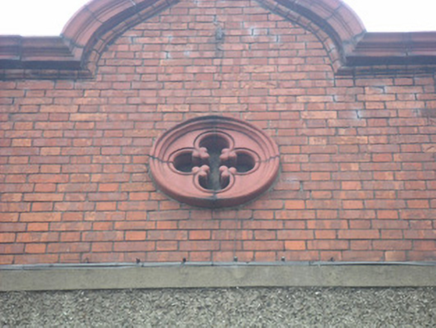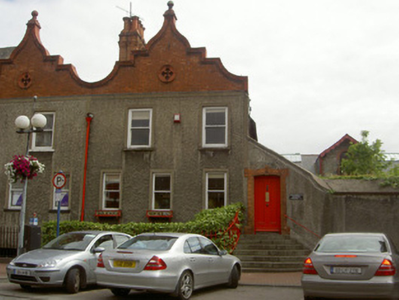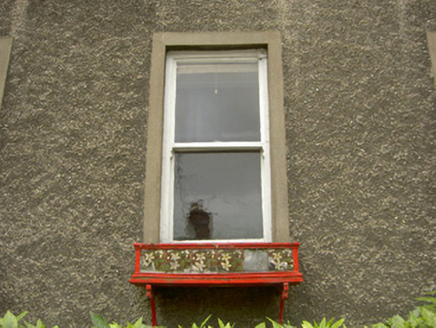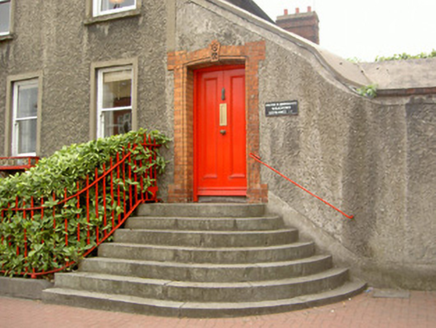Survey Data
Reg No
13705080
Rating
Regional
Categories of Special Interest
Architectural, Artistic
Original Use
House
In Use As
Office
Date
1730 - 1750
Coordinates
305085, 307316
Date Recorded
25/07/2005
Date Updated
--/--/--
Description
Semi-detached gable-fronted two-bay two-storey over basement former house, built c. 1740, with nineteenth century brick gable front. Lean-to block to west, return to south. Now in use as offices. Pitched slate roof, clay ridge tiles, terracotta coping to north gable, ball finial to pinnacle, smooth render saddle-coping to lean-to gable, red brick corbelled chimneystacks with raised banding and decorative clay pots. Unpainted roughcast rendered walling, smooth rendered straight quoins and platband; red brick Flemish bond walling to gable, terracotta oculus. Square-headed window openings, moulded smooth render surrounds, tooled stone sills, painted timber one-over-one sliding sash windows, exposed boxes; cast-iron window boxes to ground floor on wrought-iron brackets with faience tiles; painted timber six-over-six sliding sash windows to south-west, some with exposed boxes. Segmental-headed door to lean-to, red brick kneed and lugged surround, roll-moulded soffit and reveals, decorative terracotta keystone, painted timber door with two rectangular panels and brass door furniture, approached by seven granite curved steps. Set back from street behind basement area, limestone plinth with wrought-iron railings, roughcast and smooth rendered wall with saddle coping running westwards bounding rear site, square-headed gateway, wrought-iron gates.
Appraisal
This significant early Georgian house, with the adjoining house to its west, form a striking feature within the streetscape. The shaped gables, whose red brick construction forms an appealing and colourful contrast to the rendered walling, are unusual later features which enliven the vista along Roden Place. Further embellishment is provided by the fine terracotta coping, oculus, finial and keystone, and the attractive window boxes. The survival of the early sliding sash windows to the rear increases the building's significance.







